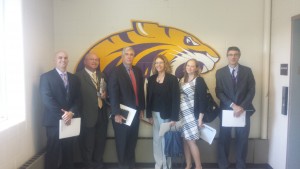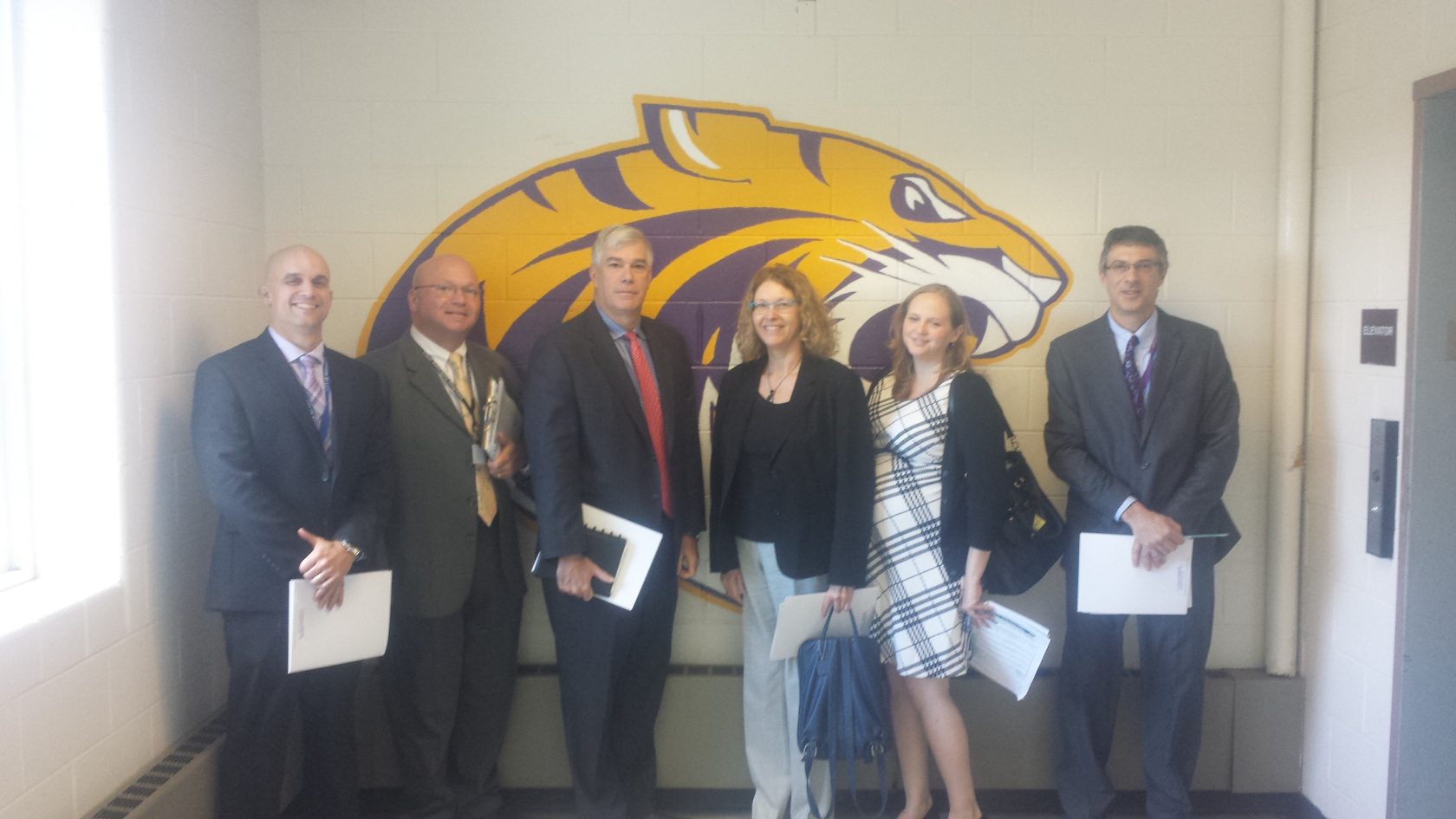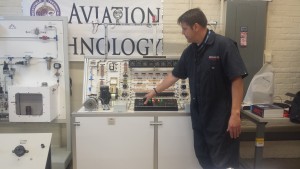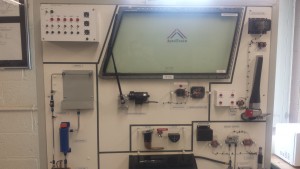
The group touring WTA on Friday. From left to right: Christopher Rogers, administrator of student interventions for Westfield Public Schools; Joseph Langone, principal of WTA; Robert LePage, asst. secretary for career education; Nancy Snyder, president and CEO of Commonwealth Corp.; Jennifer Applebaum, associate director of Commonwealth Corp.; Peter Taloumis, career technology director for WTA
WESTFIELD–Assistant secretary of career education Robert LePage visited Westfield Technical Academy (WTA) Friday to observe several facets of the school’s burgeoning technical skills programs.
The visit allowed LePage, as well as members of faculty and the Commonwealth Corporation, to see the facility and the many programs it offers. In particular, they witnessed the Signal Success Curriculum–a career readiness program created by Commonwealth Corporation–implemented in the classrooms, as well as areas where a recent $500,000 grant from the state was used to improve education.
“I think the desire is to get more workplace curriculum for soft skills, which improves workplace retention,” LePage said about the programs he and others saw on Friday. “We hear about it all across the state.”
The group saw the Signal Success curriculum used in two classes–allied health and automotive technology. The program was being used to help students problem-solve practical, real-life problems that may occur in the workplace or while seeking a new job, as well as work on communication skills and strategies.
“The curriculum is about 180 hours, and schools decide what is most important, then we design a curriculum for them,” Jennifer Applebaum, associate director of curriculum development and training for Commonwealth Corporation, said.
The program typically lasts about two years for students, and at WTA it begins in the students’ freshmen years. And even if students change concentrations–which can happen with relative frequency at a technical academy when students find they dislike a particular trade–the program stays similar for students.
“If you leave one shop and go to the next the skills and context are similar, but in different scenarios,” Applebaum said.
Additionally, teachers are provided with support to help guide students through the program.
“We do training for the teachers, provide additional coaching for teachers and are also able to track progress,” Applebaum said.
She said that the program is designed to get students ready for employment. This is critical for the students since, according to Peter Taloumis, career technical education director for WTA, 40 percent of the students enter the workforce immediately following graduation.
In addition to the Signal Success implementation, LePage and others also toured the machine technology and aviation technology portions of the school, where a $500,000 “Skills Capital Equipment Grant” from the state was split evenly between the two disciplines.
In the machine technology section, design tools were displayed, including a 3D printer that was being used by students to create earbud holders as part of a class project. And in the aviation technology department, many simulation machines were on display, many of which were purchased with the grant money provided.
The simulation machines were made to recreate a variety of functions airplane technicians and others must go through during a variety of scenarios, whether it is before takeoff, during a malfunction or when landing. The machines included lights, motors and hoses filled with liquid, to give students a fuller experience before working on the Cessna plane the school has for practice.




